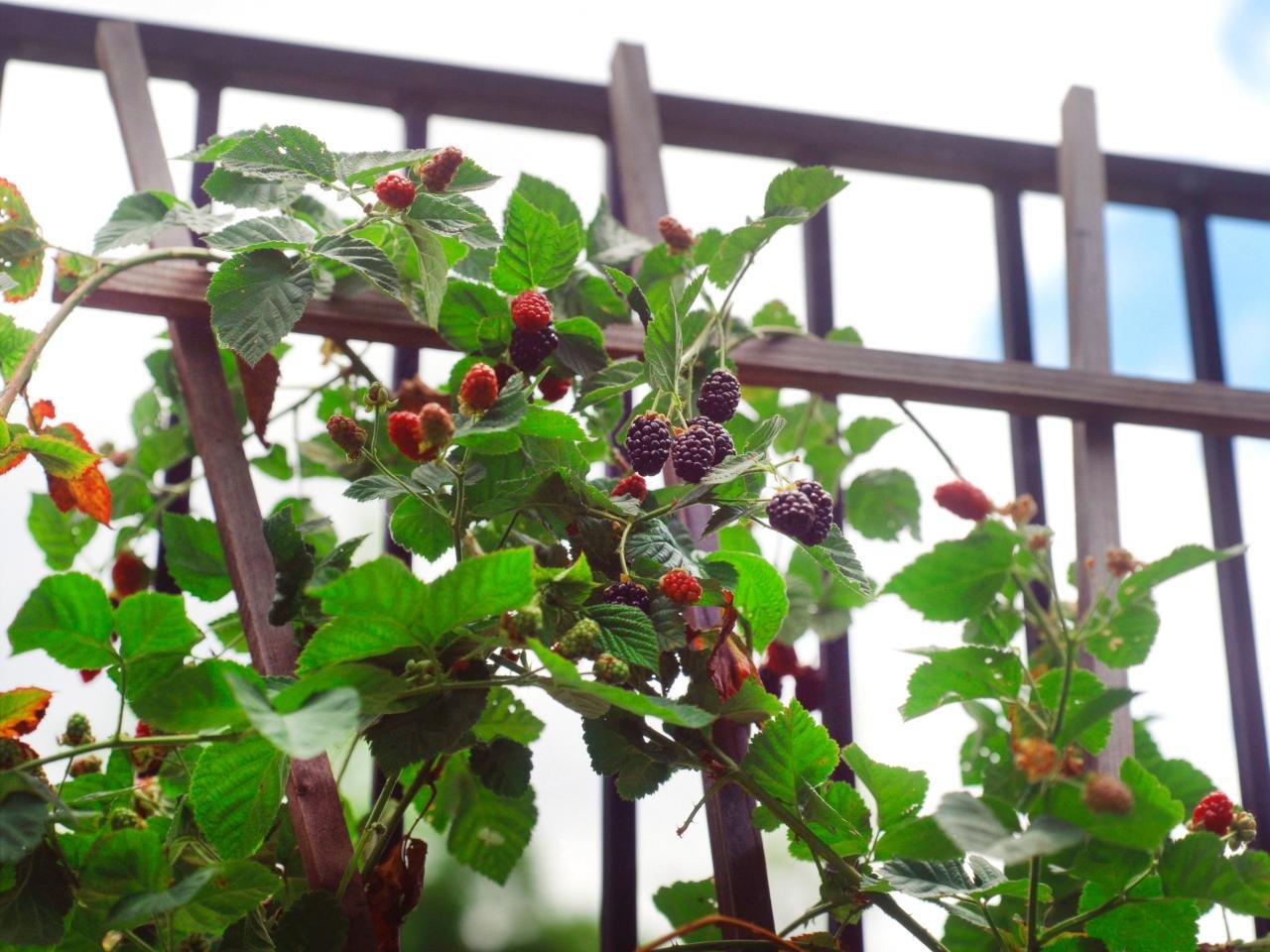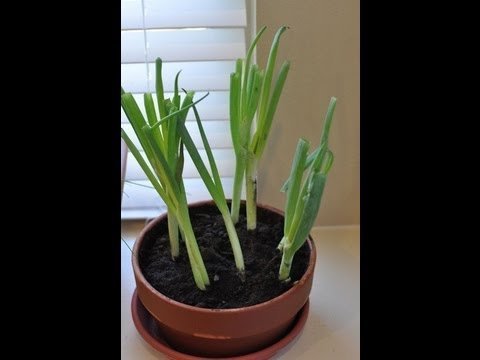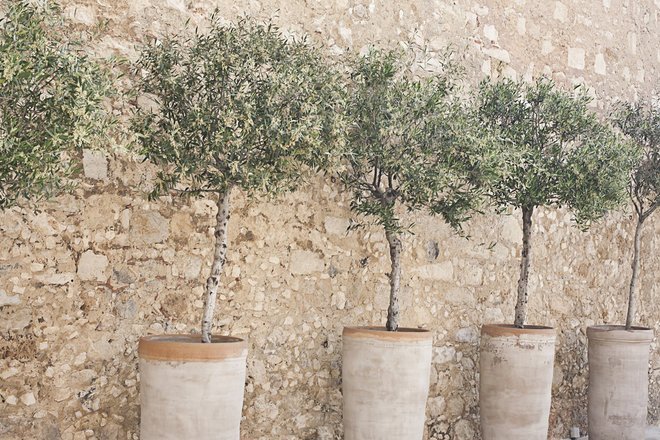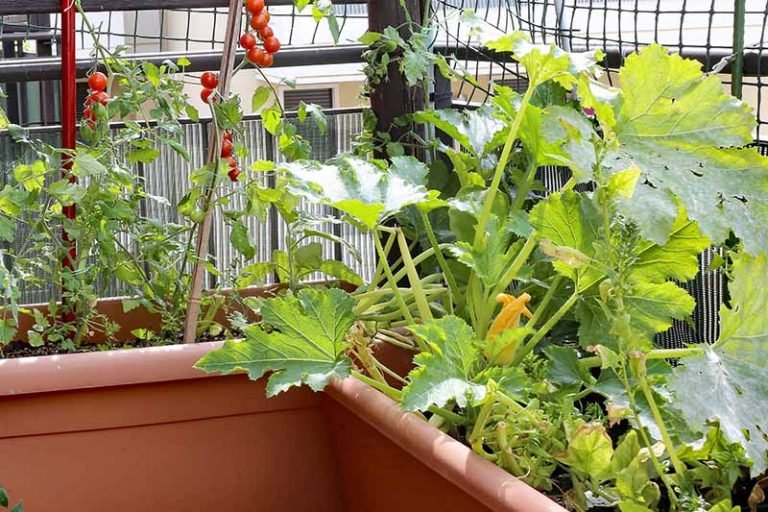how to grow blackberries in a pot – [Beginners Guide]
Have you ever considered growing blackberries in a pot at home? If not, let me tell you why it’s a great idea! Not only is it a fun and rewarding hobby, but it’s also a practical solution for those with limited outdoor space or poor soil conditions.
As someone who has been growing blackberries in pots for several years now, I can confidently say that it’s a convenient and enjoyable way to add fresh berries to your diet. Plus, there’s nothing quite like the satisfaction of picking your own ripe fruit straight from the vine.
In this guide, we’ll cover all the basics of growing blackberries in a pot, from selecting the right container to choosing the best variety for your needs. We’ll also discuss how to care for your plants, including watering, fertilizing, and pruning.
By the end of this guide, you’ll have all the knowledge you need to successfully grow blackberries in a pot and enjoy a delicious and healthy harvest. So, whether you’re a seasoned gardener or a beginner, let’s dive in and get started on this exciting adventure!
Pot or container selection
Growing blackberries in a pot at home is a great option for those who want to enjoy fresh berries without having to worry about limited outdoor space or poor soil conditions. However, choosing the right pot is just as important for blackberries as it is for cherry tomatoes. Here’s what you need to know about selecting the right pot for your blackberry plants:
Size and Capacity
Blackberries need plenty of space to spread their roots and grow, so it’s important to choose a pot that is large enough to accommodate their size. As a general rule, aim for a pot that is at least 18-20 inches (45-50 cm) in diameter and 16-18 inches (40-45 cm) deep. This will provide enough room for the roots to grow and allow the plant to produce an abundant harvest.
If you have limited space, you can opt for a smaller pot, but be aware that this may affect the productivity of your plants. It’s also important to note that blackberries can grow quite tall, so choose a pot that is at least 2 feet (60 cm) tall to allow for vertical growth.
Construction
The construction of your pot is also important for the health of your blackberry plants. Here are some things to consider:
- Material: Choose a pot that is made of a durable material, such as plastic or fiberglass. Avoid pots made of metal or wood, as they can leach chemicals into the soil or rot over time. Blackberries prefer slightly acidic soil, so a plastic pot will help to maintain the correct pH level.
- Drainage: Make sure your pot has drainage holes in the bottom to allow excess water to drain out. If your pot doesn’t have drainage holes, you can drill some yourself or add a layer of rocks or gravel in the bottom to help with drainage. Excess water can lead to root rot, which can be fatal to your plants.
- Style: You can choose a pot with a decorative design or a more utilitarian style, depending on your preference. Just make sure the pot is functional and well-suited for growing blackberries.
By selecting the right pot size and construction, you can ensure that your blackberry plants have the best possible growing conditions and produce a bountiful harvest.
Make suitable soil mix
When it comes to growing blackberries in a pot, the type and mixture of soil are also important considerations. Blackberries thrive in well-draining soil that is rich in organic matter. Here are some tips for selecting the right soil mix for your blackberries:
Type
It’s best to use a potting mix specifically formulated for container-grown fruits. Look for mixes that are labeled for berries or fruits and are made from a combination of peat moss, perlite or vermiculite, and compost. These mixes provide the right balance of nutrients and drainage for your blackberries. Avoid using garden soil or topsoil, as these types of soil can be too heavy and may not drain well in a pot.
Mixture
To give your blackberries an extra boost, you can add some amendments to your soil mix. Here are some options:
- Compost: Adding compost to your soil mix will help improve its structure, drainage, and nutrient content. It’s also a great way to recycle kitchen scraps and yard waste.
- Organic fertilizers: You can use organic fertilizers, such as fish meal or blood meal, to provide additional nutrients for your plants. These fertilizers are slow-release and will feed your blackberries over time.
- Acidifiers: Blackberries prefer slightly acidic soil with a pH between 5.5 and 6.5. You can use sulfur or peat moss to lower the pH of your soil mix if it’s too alkaline. If your soil is too acidic, you can add lime to raise the pH.
By choosing the right soil mix and adding the right amendments, you can give your blackberries the best chance of growing strong and healthy in a pot. Remember to water your blackberries regularly and provide them with adequate sunlight to help them thrive.
How to plant the blackberries?
Here’s a step-by-step guide to planting blackberries in a pot at home:
Step 1: Choose the right pot
Select a pot that is at least 18 inches in diameter and 20 inches in depth. A larger pot will allow the roots to grow well and provide more space for the blackberry bush to develop.
Step 2: Prepare the soil mix
Blackberries prefer a well-drained soil mix. Use a mixture of potting soil, perlite or vermiculite, and peat moss in equal parts. This will help ensure adequate drainage and aeration for your blackberry plant.
Step 3: Add soil mix to the pot
Fill the pot with the soil mix, leaving about 2 inches of space at the top. Water the soil mix until it is moist but not waterlogged.
Step 4: Plant the blackberry bush
Dig a hole in the center of the pot that is deep enough to accommodate the root ball of the blackberry bush. Place the bush into the hole, making sure it is level with the surface of the soil.
Step 5: Water the blackberry bush
After planting the blackberry bush, water it thoroughly to help the roots settle in. Make sure to water the plant regularly, especially during the growing season, to keep the soil consistently moist.
Step 6: Provide support
Blackberry bushes tend to grow tall and require support to keep them upright. Use a sturdy trellis or stake and tie the bush to it using garden twine. Make sure the support structure is in place before the blackberry bush grows too large.
Step 7: Fertilize the blackberry bush
Apply a balanced fertilizer to the soil around the blackberry bush after planting, and then feed it once every four weeks during the growing season. Follow the instructions on the fertilizer package for the recommended amount and frequency.
By following these simple steps, you can successfully grow a healthy and productive blackberry bush in a pot at home. Remember to monitor the plant for signs of pests and disease, and prune it regularly to keep it in good shape. With proper care and attention, your blackberry bush will reward you with sweet and delicious berries!
How to care for blackberries?
Caring for Blackberries in a Pot at Home
Growing blackberries in a pot at home is a great way to enjoy fresh berries without needing a large outdoor space. Here are some tips on how to care for blackberries in a pot:
Watering Requirement
Blackberries prefer consistently moist soil, but they don’t like to be waterlogged. Water the plants deeply once or twice a week, depending on the weather and soil conditions. Check the soil moisture level by sticking your finger about an inch into the soil. If it feels dry at that depth, it’s time to water. Avoid getting water on the leaves or fruit, as this can increase the risk of disease.
Fertilizer Requirement
Blackberries benefit from regular fertilization to encourage growth and fruit production. Use a balanced fertilizer, such as a 10-10-10 formula, according to the package directions. Alternatively, you can use a slow-release fertilizer or compost to provide a steady supply of nutrients over time. Apply fertilizer in early spring and again in early summer.
Sunlight Needs
Blackberries need full sun to thrive, so choose a spot in your garden or patio that gets at least 6 hours of direct sunlight per day. If you don’t have a sunny spot outdoors, you can also grow blackberries in a sunny window indoors using a grow light.
Pruning & Training
Pruning blackberry plants is essential for maintaining their size and shape, as well as encouraging fruit production. Blackberries produce fruit on second-year canes, so it’s important to remove any canes that have already fruited. Cut them back to the ground after harvest. In late winter or early spring, prune any remaining canes by cutting them back to 3-4 feet tall.
Blackberry plants can be trained to grow on a trellis or fence for support. Tie the canes to the trellis or fence with garden twine as they grow. This will help keep the plants upright and make harvesting easier.
Other Care
In addition to watering, fertilizing, and pruning, there are a few other things you can do to care for your blackberry plants:
- Mulch the soil around the plants to help retain moisture and suppress weeds. Use a 2-3 inch layer of mulch, such as wood chips or straw.
- Protect the plants from birds and other animals by covering them with netting.
- Watch for signs of pests and diseases, such as spider mites or powdery mildew. If you notice any issues, take action immediately to prevent them from spreading.
- Harvest the berries when they are fully ripe. They should come off the plant easily when gently tugged. Store them in the refrigerator and use them within a few days.
With proper care and attention, blackberry plants can thrive in a pot and provide you with a delicious harvest of fresh berries.
Common problems
Other Issues
In addition to pests, insects, diseases, and poor production, there are a few other issues that blackberries grown in pots may face:
Root-bound plants: When the roots of a plant become cramped and tangled within a container, the plant may not grow well or produce fruit. To prevent this, choose a pot that is large enough for your blackberry plant to grow into and consider repotting the plant every few years.
Overcrowding: Blackberry plants need space to grow and spread out, so be careful not to overcrowd them in a small pot. Consider planting just one or two plants in a larger pot rather than several smaller ones.
Temperature stress: Blackberry plants can be sensitive to extreme temperatures, both hot and cold. Keep your plant in a spot that is protected from extreme weather conditions and consider moving it indoors during extreme weather events.
Lack of pollination: Blackberry plants need to be pollinated in order to produce fruit. If you’re growing your blackberry plant indoors, you may need to manually pollinate the flowers using a small brush or by gently shaking the plant.
By being aware of these potential issues and taking steps to prevent or address them, you can help ensure that your blackberry plant thrives and produces a bountiful harvest
Harvesting & storing homegrown blackberries
To harvest blackberries, wait until they are fully ripe and deep black in color. The blackberry should be slightly soft to the touch, but not mushy or overly firm. Ripe blackberries will easily detach from the stem with a gentle tug. If the berries do not come off easily, they may not be fully ripe yet.
It’s important to harvest blackberries frequently as they ripen, as leaving them on the plant for too long can cause them to become overripe and fall off. It’s also a good idea to harvest in the morning when the berries are cool and firm, as this will help them last longer after being picked.
When it comes to storing blackberries, it’s best to refrigerate them as soon as possible after harvesting. Place them in a single layer on a paper towel-lined plate or tray and cover them with plastic wrap. Blackberries can be stored in the refrigerator for up to five days.
If you have more blackberries than you can use in a few days, you can freeze them for later use. To freeze blackberries, place them in a single layer on a baking sheet and freeze them until they are solid. Then, transfer the berries to a freezer-safe container or bag and store them in the freezer for up to six months.
In summary, harvest blackberries when they are fully ripe and deep black in color, slightly soft to the touch, and detach easily from the stem. Store them in the refrigerator in a single layer on a paper towel-lined plate or tray, and cover them with plastic wrap. If you have excess blackberries, freeze them for later use
Growing blackberries in container – Conclusion
Congratulations on learning how to grow blackberries in a pot! With the right knowledge and tools, you can easily grow your own juicy and sweet blackberries right at home. While growing blackberries in a pot may present some challenges, with proper care and attention, you can achieve great success.
Whether you have a small balcony or a large garden, growing blackberries in a pot can be a great way to enjoy fresh and healthy fruit throughout the season. By choosing the right pot, soil mix, and variety of blackberry, you can ensure that your plants thrive and produce abundant fruit.
Remember to provide your blackberry plants with ample sunlight, water, and nutrients, and be sure to protect them from pests and diseases. With patience and care, you’ll be rewarded with a bountiful harvest of delicious blackberries that you can enjoy fresh, in desserts, or in jams and preserves.
So why not give it a try? Follow the steps outlined in this guide, and get started on growing your own homegrown blackberries today. Happy gardening!








